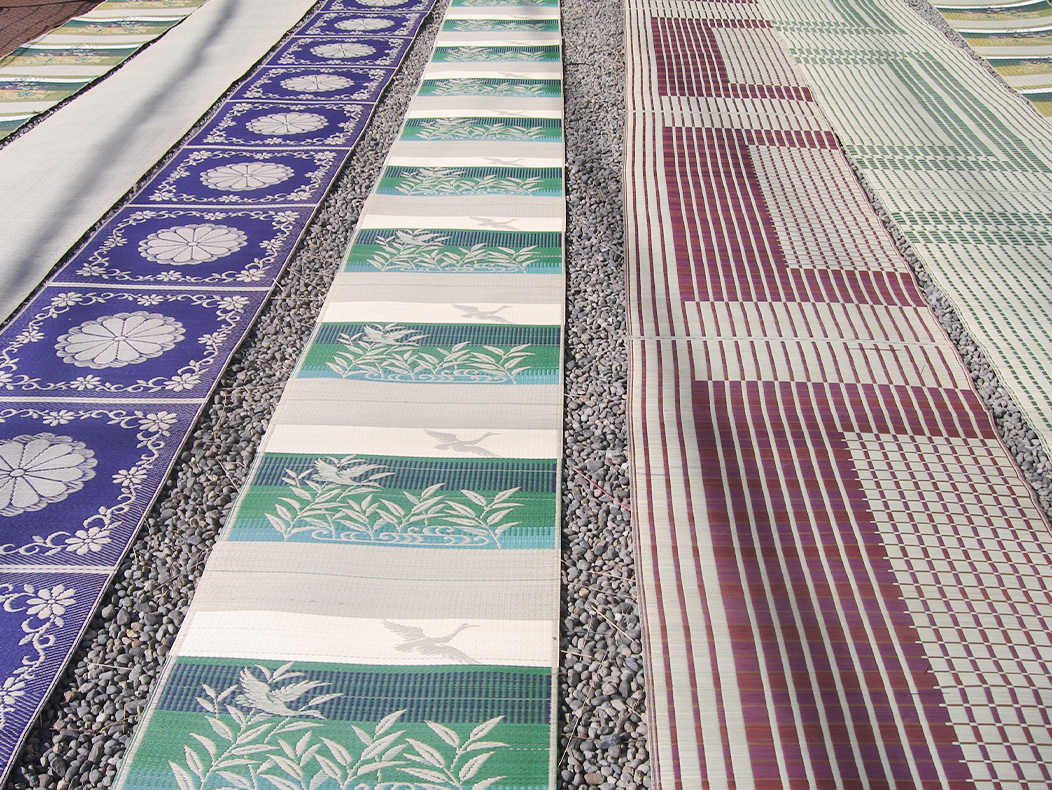
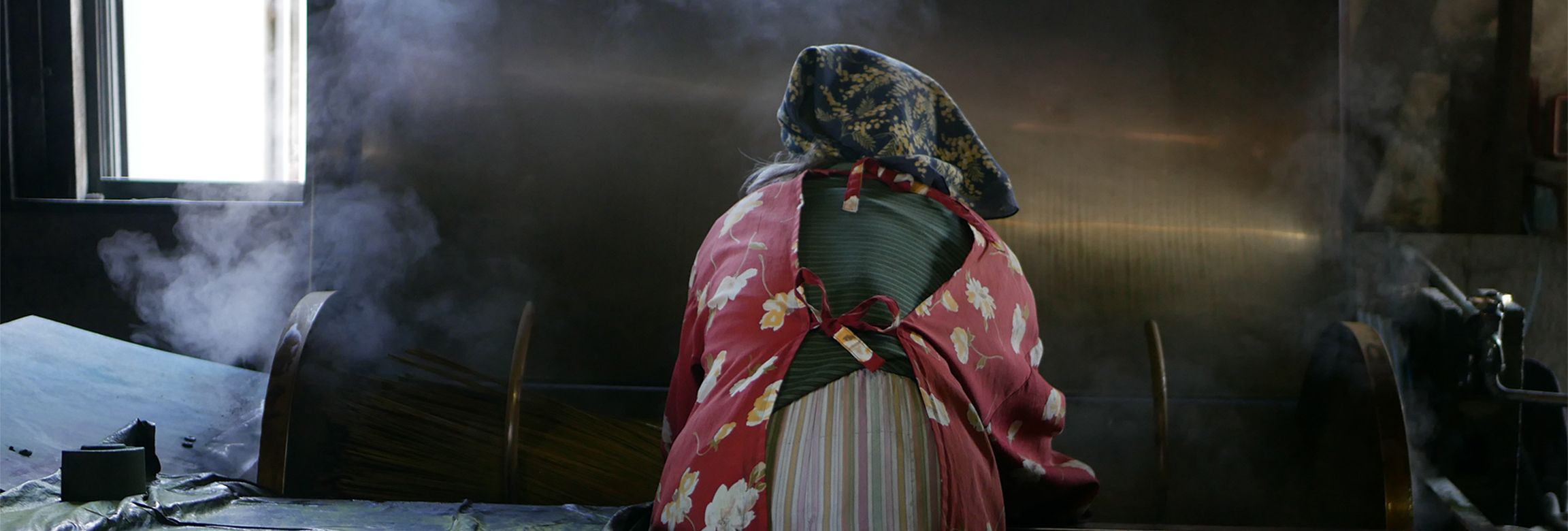
Many people are involved in the rush matting process: rush mat producers, sorters, carriers, pattern makers, dyers, weavers, loom repairers, resin producers and stitchers. The rush mat is made with the involvement of many people, to whom we are grateful.
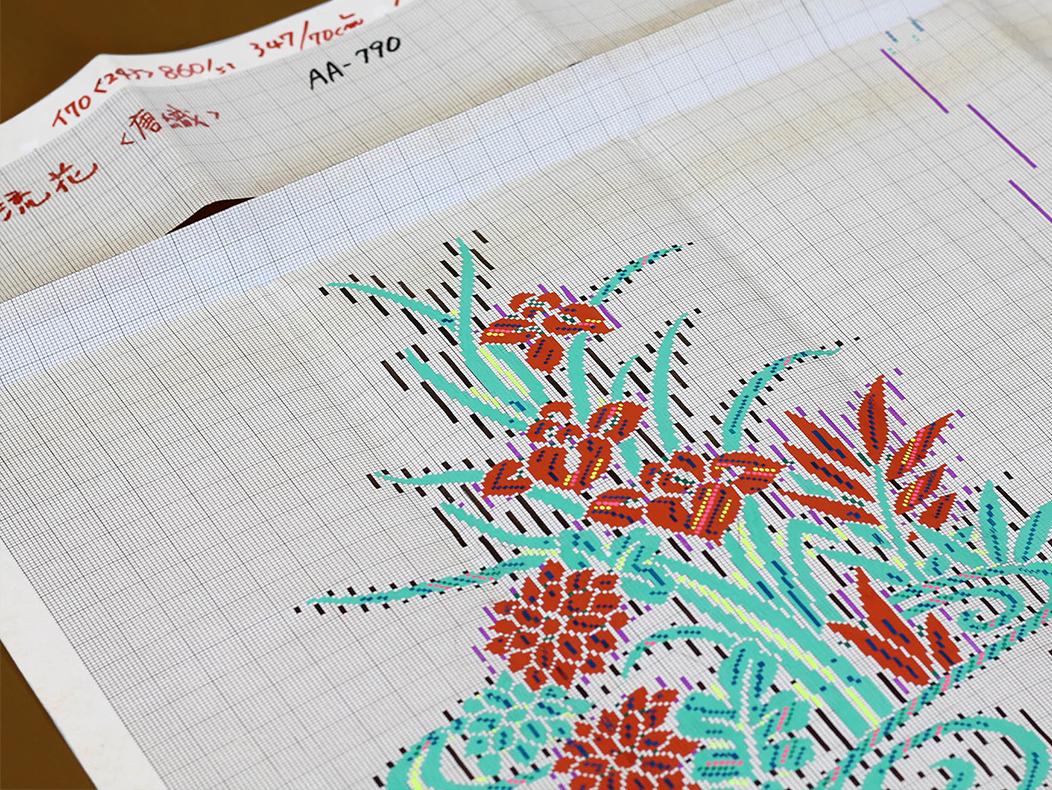
Step.01
Design and data production
First, we create a design that expresses the overall image of the rush mat, such as shape and color, and ask the rush mat design company to go forward with it. Rush mats are completely different from the rush mats woven with threads, so the data is set on a loom based on the properties of the goza. The specification of the loom differs according to the number of warp threads and length of rush mats, so a specification sheet is also created.
Step.02
Staining the rushes
During this step, we dye the igusa at three locations in Fukuoka prefecture. Each company has its own color specialty, so we request it according to the situation. We put about 300 liters of water and dye into a revolving kettle, bring it to a boil, and repeat the firing and steaming process for about 20 minutes. After that, it is put in a dryer for about 8 hours. Approximately 10 kg of dye can be produced at one time.
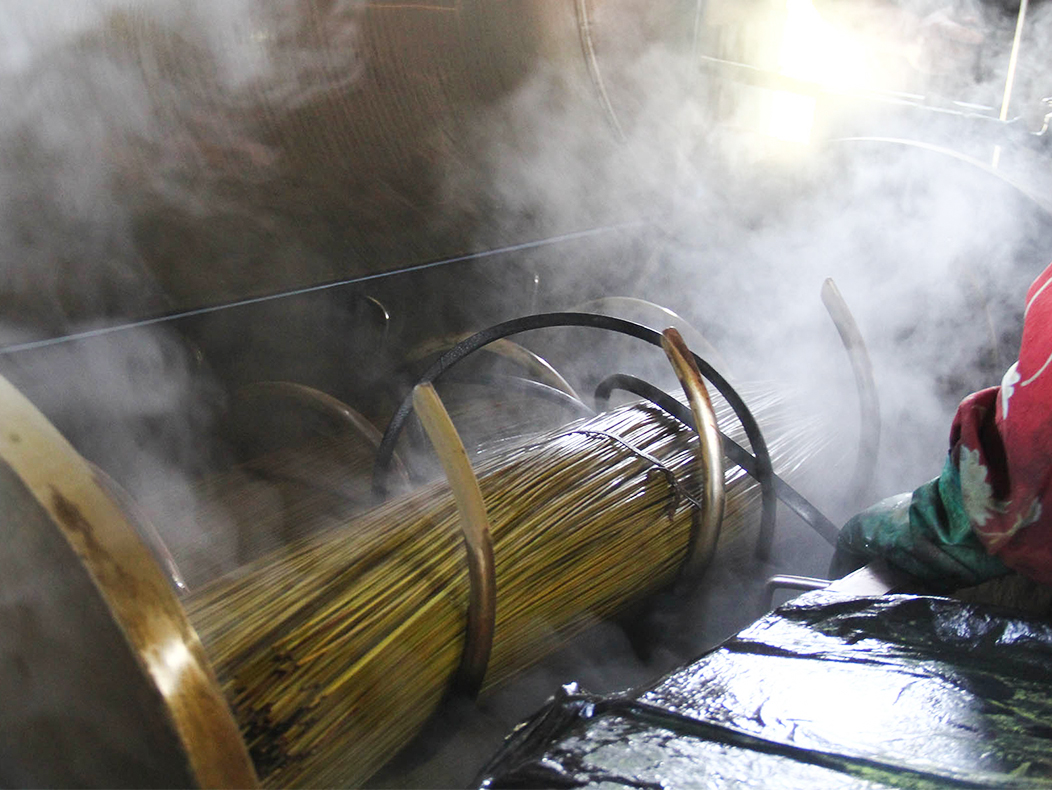
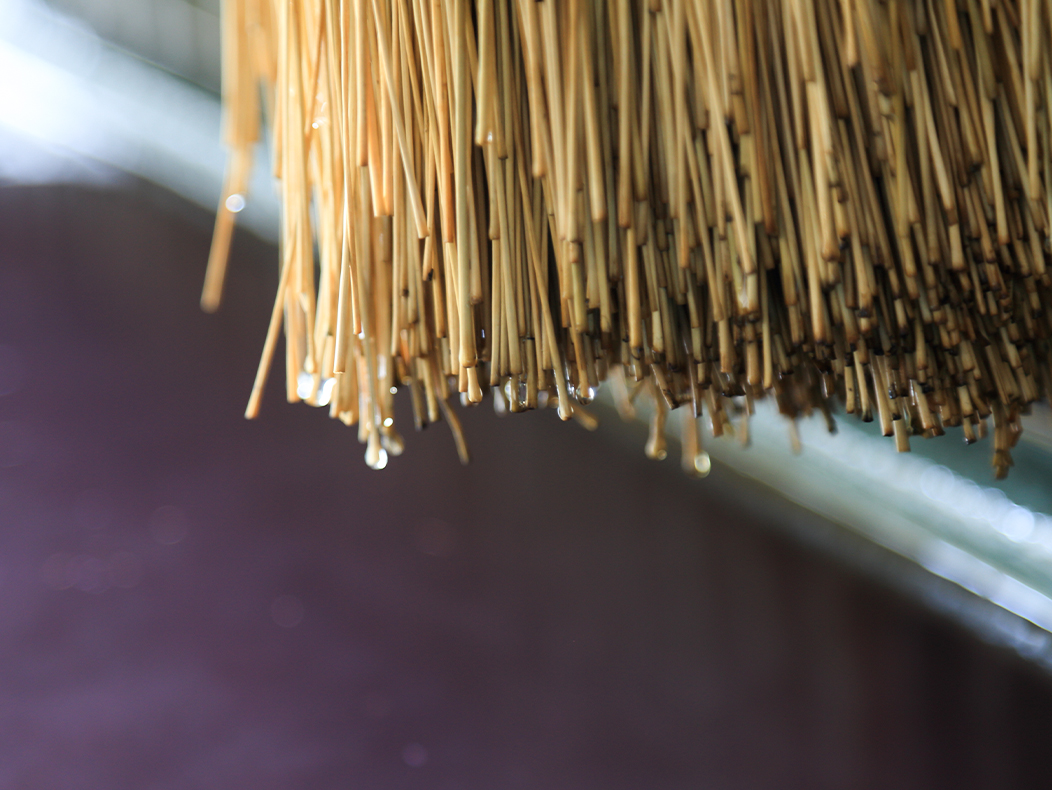
Step.03
Humidification
Next, the rushes need to be moistened before setting them on the loom. The centre of the rush is made of sponge-like fibers. By moistening them, the skin becomes softer and stickier and the grass is less likely to break when weaved on the loom.
Step.04
Sorting
The rushes are manually sorted one by one. Because rushes are monocotyledonous plants in the rush family, some of them are broken or dead. They are checked one by one by human eyes. Only the best quality ones are sorted out.
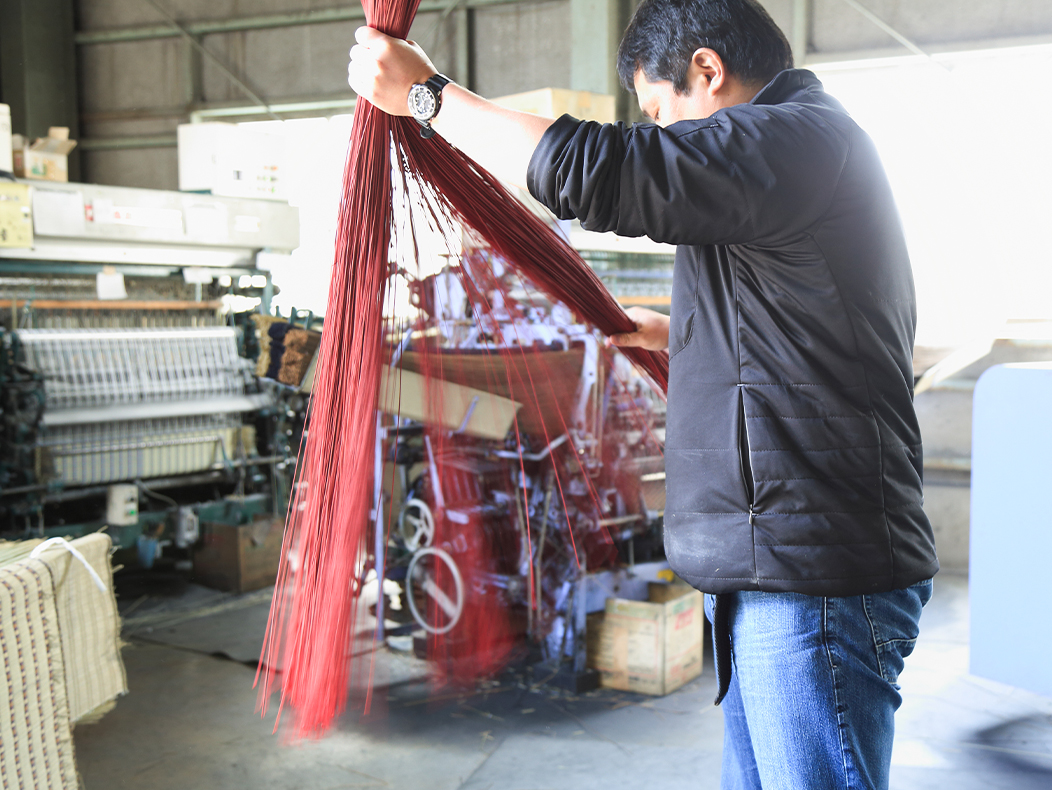
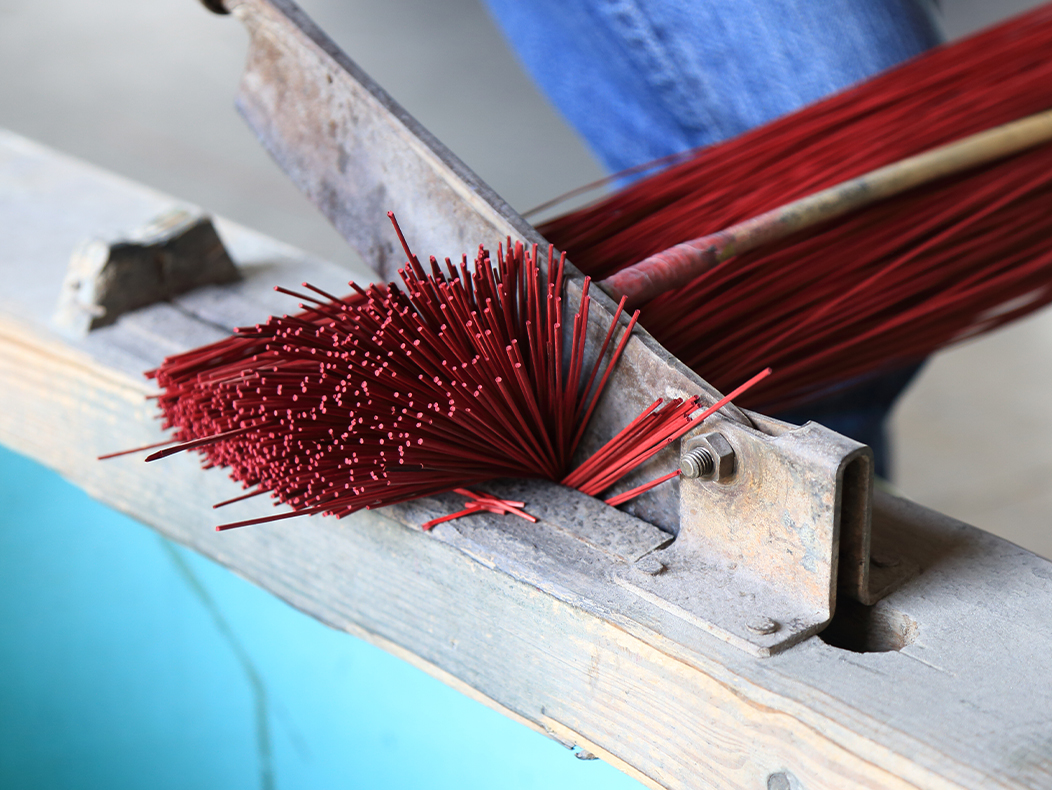
Step.05
Cutting
The rush mats are cut to match the size of the width of the weave. Our company produces 3 sizes of rush mats, the honma (95.5 cm width), the edoma (87 cm width) and the zabuton (70 cm width). The rush mats are cut about 10 cm longer than these sizes and set on a loom.
Step.06
Production on the loom
The weaving loom reads the data and sets the gears (number of keys) for thickness adjustment according to the specifications. Finally, a trial run is performed to ensure that the thread is correctly applied to the earthenware closing. Production starts after adjustments on the tightening are finished. The rotation speed is about 100 rpm. The daily production rate of one loom is about 10 tatami mats (about 18 meters).
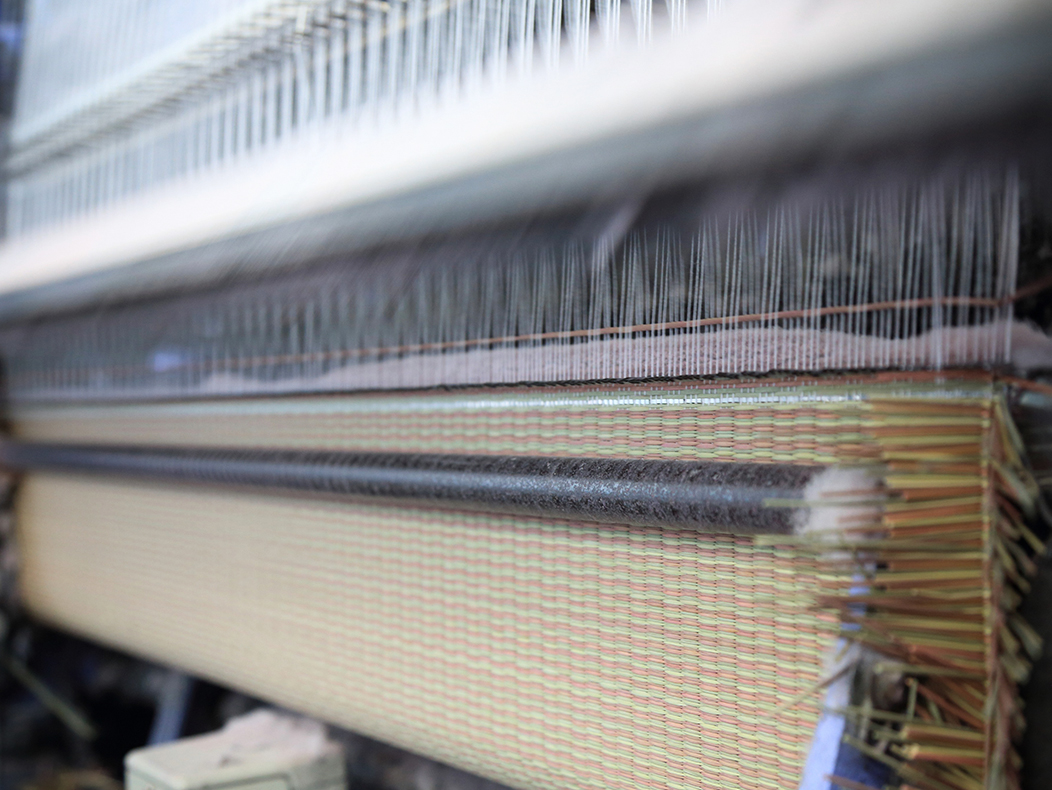
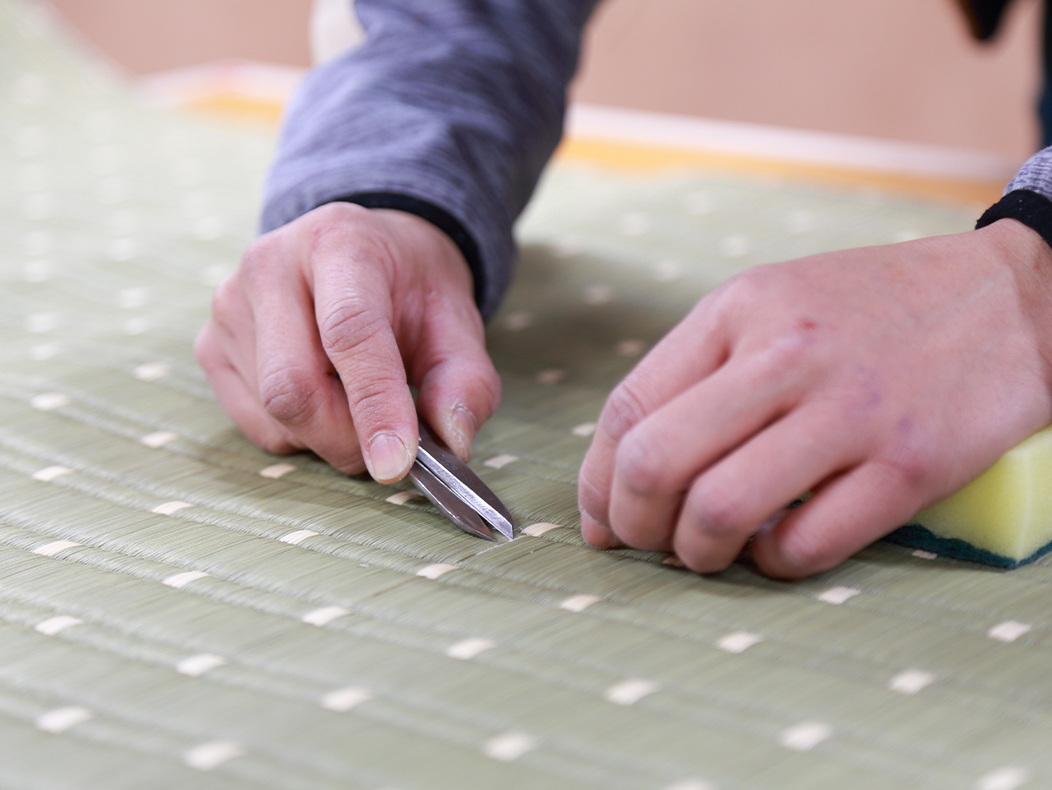
Step.07
Finishing and quality check
This step is the most important process in hanagoza production. Unlike industrial products, the igusa is grown in rice fields, so each one is different. All rush mats are handcrafted and finished by hand. Breakage or unevenness in the rush grass is repaired with stitching awls and thread-cutting scissors. Lastly, by using a horsehair brush we remove the excess of dyed soil and bring out the luster of the mat.
Step.08
Drying
The rush mat contains moisture before weaving. For that, drying the back of the mat in the sun for about half a day is necessary. To prevent burning damage of the front surface from the UV rays, drying on the back surface is needed.
